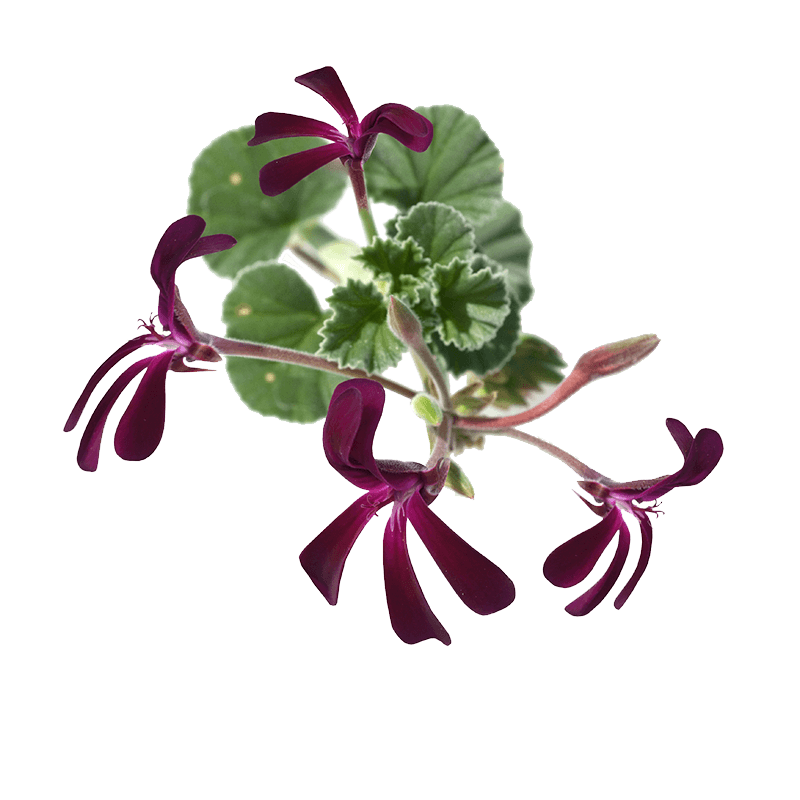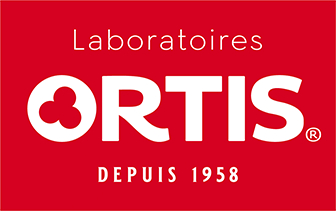
Pelargonium
Latin name
Origin
Used part
Active components
Coumarin (umckalin): immunostimulant.
Proanthocyanidins: antiviral and antibacterial.
Usage
Bibliographical references
- Investigation of the influence of EPs® 7630, a herbal drug preparation from Pelargonium sidoides, on replication of a broad panel of respiratory viruses.
Michaelis M, Doerr HW, Cinatl J Jr.
Phytomedicine (2011) Mar 15;18(5):384-6.
PubMed: https://www.ncbi.nlm.nih.gov/pubmed/21036571 - Fever in children: Overview
Institute for Quality and Efficiency in Health Care (IQWiG)
Informed Health Online, November 17, 2016 Cologne, Germany
PubMed Health: https://www.ncbi.nlm.nih.gov/pubmedhealth/PMH0072639/ - Secondary Bacterial Infections Associated with Influenza Pandemics
Denise E. Morris, David W. Cleary, Stuart C. Clarke
Front Microbiol. 2017; 8: 1041.
PMC: https://www.ncbi.nlm.nih.gov/pmc/articles/PMC5481322/pdf/fmicb-08-01041.pdf - Age-dependence and intersubject variability of tracheobronchial particle clearance
Robert Sturm
Pneumon 2011, 24(1):77-85.
PNEUMON Journal: http://www.pneumon.org/assets/files/789/file387_427.pdf - Extract of Pelargonium sidoides (EPs 7630) improves phagocytosis, oxidative burst, and intracellular killing of human peripheral blood phagocytes in vitro
Andreas Conrad, Cathrin Hansmann, Inge Engels, Franz D. Daschner, Uwe Frank
Phytomedicine 14 (2007) SVI 46–51
PubMed: https://www.ncbi.nlm.nih.gov/pubmed/17184983 - Immune responses induced by Pelargonium sidoides extract in serum and nasal mucosa of athletes after exhaustive exercise: modulation of secretory IgA, IL-6 and IL-15.
Luna LA Jr, Bachi AL, Novaes e Brito RR, Eid RG, Suguri VM, Oliveira PW, Gregorio LC, Vaisberg M.
Phytomedicine. 2011 Feb 15;18(4):303-8.
PubMed: https://www.ncbi.nlm.nih.gov/pubmed/20850953 - The efficacy of Pelargonium sidoides in the treatment of upper respiratory tract infections in children with transient hypogammaglobulinemia of infancy.
Patiroglu T, Tunc A, Eke Gungor H, Unal E.
Phytomedicine. 2012 Aug 15;19(11):958-61.
PubMed: https://www.ncbi.nlm.nih.gov/pubmed/22809962 - Antimicrobial, Antiviral and Immunomodulatory Activity Studies of Pelargonium sidoides (EPs® 7630) in the Context of Health Promotion
Herbert Kolodziej
Pharmaceuticals 2011, 4, 1295-1314
PMC: https://www.ncbi.nlm.nih.gov/pmc/articles/PMC4060126/pdf/pharmaceuticals-04-01295.pdf - Anti-Adhesive Activities of Flavan-3-ols and Proanthocyanidins in the Interaction of Group A-Streptococci and Human Epithelial Cells
Aneta Janecki, Herbert Kolodziej
Molecules 2010, 15, 7139-7152
MDPI: http://www.mdpi.com/1420-3049/15/10/7139 - EPs 7630 improves acute bronchitic symptoms and shortens time to remission. Results of a randomised, double-blind, placebo-controlled, multicentre trial.
Matthys H, Funk P.sh
Planta Med. 2008 May;74(6):686-92.
PubMed: https://www.ncbi.nlm.nih.gov/pubmed/18449849 - Evaluation of pharmacodynamic activities of EPs® 7630, a special extract from roots of Pelargonium sidoides, in animals models of cough, secretolytic activity and acute bronchitis.
Bao Y, Gao Y, Koch E, Pan X, Jin Y, Cui X.
Phytomedicine. 2015 Apr 15;22(4):504-9.
Institute of Chinese Materia Medica: http://www.icmm.ac.cn/UploadFiles/Article/2015/6/20150611005.pdf - Pelargonium sidoides extract EPs 7630: a review of its clinical efficacy and safety for treating acute respiratory tract infections in children
Domenico Careddu, Andrea Pettenazzo
Int J Gen Med. 2018; 11: 91–98.
PMC: https://www.ncbi.nlm.nih.gov/pmc/articles/PMC5849386/ - EPs 7630 in Acute Respiratory Tract Infections – A systematic Review and Meta-Analysis of Randomized Clinical Trials
Heinrich Matthys, F.A. Malek, Wolfgang Kamin
J Lung Pulm Respir Res. 2016;3(1):00068.
MedCrave: http://medcraveonline.com/JLPRR/JLPRR-03-00068.pdf - EPs 7630 is effective and safe in children under 6 years with acute respiratory tract infections: clinical studies revisited.
Kamin W, Funk P, Seifert G, Zimmermann A, Lehmacher W.
Curr Med Res Opin. 2018 Mar;34(3):475-485.
PubMed: https://www.ncbi.nlm.nih.gov/pubmed/29119837
The health claims that feature on our website in relation to the plants contained in our products are compliant with the list of health claims awaiting final assessment by the Community authorities (cf. website of the European Commission: http://ec.europa.eu/nuhclaims/). However, they may be subject to modification following their assessment by the national competent authorities.
The health claims relating to other nutrients or substances contained in our products that feature on our site are compliant with Regulation No. 432/2012 of the Commission of 16 May 2012 which establishes a list of authorised health claims authorised in relation to food products, other than those in reference to the reduction of the risk of disease as well as community-based development and child health (cf. website of the European Commission: http://ec.europa.eu/nuhclaims/).

 Belgique
Belgique  België
België  France
France  Italia
Italia  Portugal
Portugal  España
España  United Kingdom
United Kingdom  Κύπρος
Κύπρος 